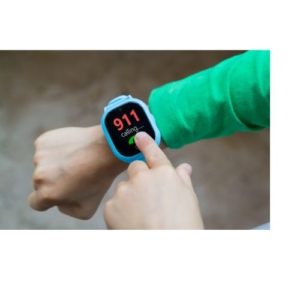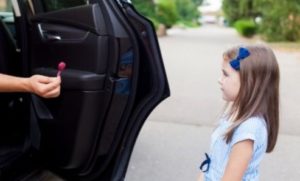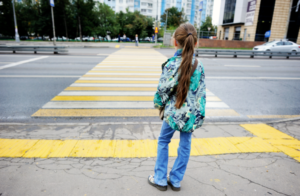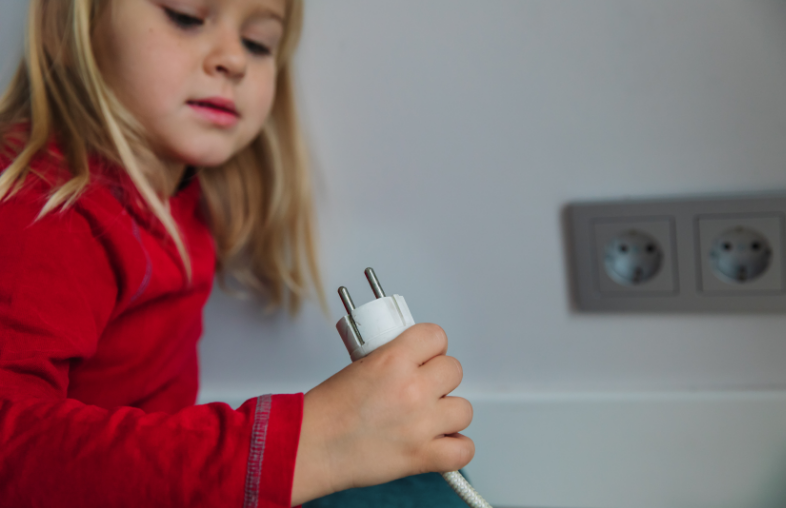Whether our goal as parents is to keep our kids safe at school, safe at home or safe in public, there are some safety measures that should be taken seriously.
Young children are constantly developing and taking in the world around them. It can be through play or accidents, but they are bound to get hurt someway or another.
Our job is to have safety rules in place, ingrained in them, to keep them as safe as possible and minimize the dangers around them.
Here are 11 VITAL Safety Rules And Techniques For Kids
Let’s get in to it!
1. Basic pedigree information for themselves, and their immediate family
This is especially important for younger children. They should know the following by memory:
- Their full names
- Their full address
- At least one parent’s phone number
- Your general place of employment
Your general place of employment is important along with a general location.
For example, if you are a nurse in a nearby city, they should be able to provide your phone number, the city and hospital you work in, and your full name.
If a child gets lost and is able to provide this information to the right person, it will greatly increase your chances of reuniting with your child.
2. Instructions on what to do if they get lost
Practice scenarios with your child and go over them frequently to make sure they are retaining this vital information.
“What would you do if you couldn’t find us?”
Test them every couple of days to see if they remember the procedure for this type of emergency.
Instructions like the ones below can be very useful:
- Stay where you are.
- Yell our names as loud as you can. Not mommy. Not daddy. Our own personal names.
- Look for two kinds of people: a police officer or a mommy with kids.
Why a mommy with kids? If your child goes missing, the truth is most people will help your child, but you want to narrow it down so that if your child does get help, it’s help from a “statistically” safe stranger.
A mother with kids in public is much less likely to be looking to hurt a lost child. Almost all cases of abductions of children are by males, not females.
- Once you found someone to help you, DO NOT GO WITH THEM. Ask them to call mommy or daddy with the phone number you memorized.
- If they tell you they called mommy or daddy, DO NOT GO WITH THEM until you hear mommy or daddy on the phone.
- The only person you can go with is a police officer and you MUST make sure he has a visible firearm, a police patch, and a shield.
The chances of your child going missing and coincidentally having someone impersonating law enforcement endanger them is astronomically low, but we still want them to recognize what a police officer looks like by detailing their uniform with specifics.
3. Practice calling 911
Have your child practice calling 911.
Have them actually pick up the phone, mock dial 911 and you can simulate as the operator. Once they mock dial 911, dial in your cellphone number and act as the 911 operator.

They should be able to detail the emergency, their names and address. This is part of our “safety talk” we do routinely as an activity which we detailed in our 10 Practical Home Activities for kids post.
4. no secrets. their body is their body.
Kids should feel they always have a choice. If they don’t want a hug, or a kiss, then they have a right to say no. Whether it be a family member or friend, never force your kids to kiss or hug someone they don’t want to, even you as a parent. It is just reinforcing that they are in control of who touches them.
Remind them secrets don’t exist in the family. No one should tell them that what they do together is a secret at a young age. If they adopt this mindset, when they hear “it’s a secret” they will automatically know to say ‘NO SECRETS” and confide in you.
5. be able to unbuckle their car seats
Have your child practice unbuckling their car seat belt and buckling it back up.
If a situation ever arises where they are locked inside of a car, maybe in the heat, at a certain age (3-4+), they should be able to unbuckle their car seat as well as open car doors.
This safety rule should come with the caveat that they never open or unbuckle their seat belt on their own, unless it is an emergency.
6. never go anywhere with a stranger or an adult you have not authorized
As parents, there is no such thing as paranoia.
Sometimes the people who will do the most harm to our children are right under our noses.

This safety rule is about teaching kids NEVER to follow or go anywhere with any stranger offering them ANYTHING.
However, it also applies to not going anywhere with anyone you as a parent don’t feel comfortable with.
This can be a neighbor asking your child to come over and play with their kids. Or your child might run into their house to play without you knowing.
Be VERY PICKY with who your children get to spend time alone with, unsupervised by you, and let them know who these people are.
It is not about not trusting people, it is about only fully trusting a select few.
7. teach them simple self defense techniques
Teach your kids simple self defense techniques.
They might not stop all possible dangerous encounters, but they certainly won’t hurt.
The reality is, that while most of those 30,000+ children are probably not abducted, the number is much higher than the 350 the FBI has claimed. As parents, we should not take any chances and prepare our children as much as possible for, hopefully, something that will never happen.
Here is an awesome self defense technique for kids:
- In the case of an abduction a child should not run, the individual will simply chase the child and grab him/her from behind.
- Instead, teach your kids to wrap their arms around the person’s lower leg very tight and wrap their legs around the person’s other legs very tight.
- At this point they should begin screaming for help as loud as they can.
This will make it difficult for the abductor to pick your kids up, and it will give your child time to attract attention and get help from the public.
We personally have tried this many times with our children and it actually is pretty difficult to get them off the ground this way.
At the very least, it buys your child time to get attention from the public as they scream for help.
Here is a video from a youtuber who demonstrates this very well:
8. No sleepovers when they are young
This goes back to safety rule number 6.
Be very wary of who you allow your child to spend time with alone. Sleepovers should be reserved for very close family. Children should not be sleeping over a friend’s house, without you present, during their elementary school years.
9. Stay away from roads/streets
According to parents.com , over 400 kids die yearly from being struck by a vehicle.
Most car accidents happen near home, on local roads. Accidents can happen right in front of your own home.
If you own a home, have a clear boundary your kids cannot cross when playing outside so they are far from the street and roads. Young kids should always be supervised outside and instructed to play away from the streets. They should not attempt to get anything that rolls into the street, like a ball, no matter how slow the traffic on the road/street is.

When walking in public an crossing streets, make sure they understand when they can and cannot cross the street not only according to the street signals, but also by looking both ways, even if it is their turn to cross.
When getting out of cars, opening doors, or walking in a parking lot, they should always be looking for moving cars.
10. Stay away from dangerous home appliances/chemicals
Teaching kids to stay away from home appliances that can be dangerous like stoves, sockets, electrical wires, and cleaning products/medicine cabinets can save their life. Lock all cabinets that contain chemicals, and drill into your kids that they should not touch any of the above.
Don’t just tell your child not to do it, explain it to them. Tell them what can happen if they touch these items/appliances. This will help the child understand why they shouldn’t touch it instead of just being told no and having their curiosity pick up.
11. Water safety
Never leave a child unattended in a bathtub until they are old enough to shower on their own.
It might seem like you are gone for a minute, but that minute can be all it takes. A child may be old enough (5+) to play in the bath by themselves, but it is not only drowning we are concerned about.
Children sometimes get up and splash around. They can fall,hit their head and hurt themselves.
In the pool, the beach and other water attractions, eyes should always be on the child, every minute, every second. Again, these things can happen in a minute.
Kids should also understand that they cannot and should not go into any body of water without adult supervision.
We hope you found these safety rules helpful! Please share if you did!

